Table of Contents
The euro, the eurozone’s currency, has only been circulated since 2002. Before its introduction, each European country had its currency, reflecting a rich history of economic evolution and national identity. This article delves into the histories of the various old currencies of Europe before the euro was introduced.
Which Countries Use the Euro?
The eurozone comprises 19 European Union (EU) member states, with the remaining members, such as Poland and Hungary, continuing to use their currencies. However, most of the remaining EU27 member states, aside from Denmark, are expected to adopt the euro once they meet specific criteria.
Countries in the Eurozone and Their Pre-Euro Currencies
Here’s a table listing the eurozone countries, their old currencies, and the dates they adopted the euro:
| Country | Old Currency | Date Joined the Eurozone | Date Euro Began Circulation |
|---|---|---|---|
| Austria | Austrian schilling | 1999 | 2002 |
| Belgium | Belgian franc | 1999 | 2002 |
| Cyprus | Cypriot pound | 2008 | 2008 |
| Estonia | Estonian kroon | 2011 | 2011 |
| Finland | Finnish markka | 1999 | 2002 |
| France, Monaco, Andorra | French franc | 1999 | 2002 |
| Germany | German Deutschemark | 1999 | 2002 |
| Greece | Greek drachma | 2001 | 2002 |
| Ireland | Irish pound | 1999 | 2002 |
| Italy, San Marino, Vatican City | Italian lira | 1999 | 2002 |
| Latvia | Latvian lats | 2014 | 2014 |
| Lithuania | Lithuanian litas | 2015 | 2015 |
| Luxembourg | Luxembourgish franc | 1999 | 2002 |
| Malta | Maltese lira | 2008 | 2008 |
| Netherlands | Dutch guilder | 1999 | 2002 |
| Portugal | Portuguese escudo | 1999 | 2002 |
| Slovakia | Slovak koruna | 2009 | 2009 |
| Slovenia | Slovenian tolar | 2007 | 2007 |
| Spain, Andorra | Spanish peseta | 1999 | 2002 |
Former European Currencies
Here’s a closer look at some of the notable pre-euro currencies and their histories:
German Deutschemark
The German Deutschemark (DM) was the currency of West Germany from 1948 until 1990 and the unified Germany from 1990 until 2002. Known for its stability, the Deutschemark was managed by the Bundesbank, which maintained tight monetary policies to control inflation. The DM was exchanged for euros at a rate of 1.95583 to one.
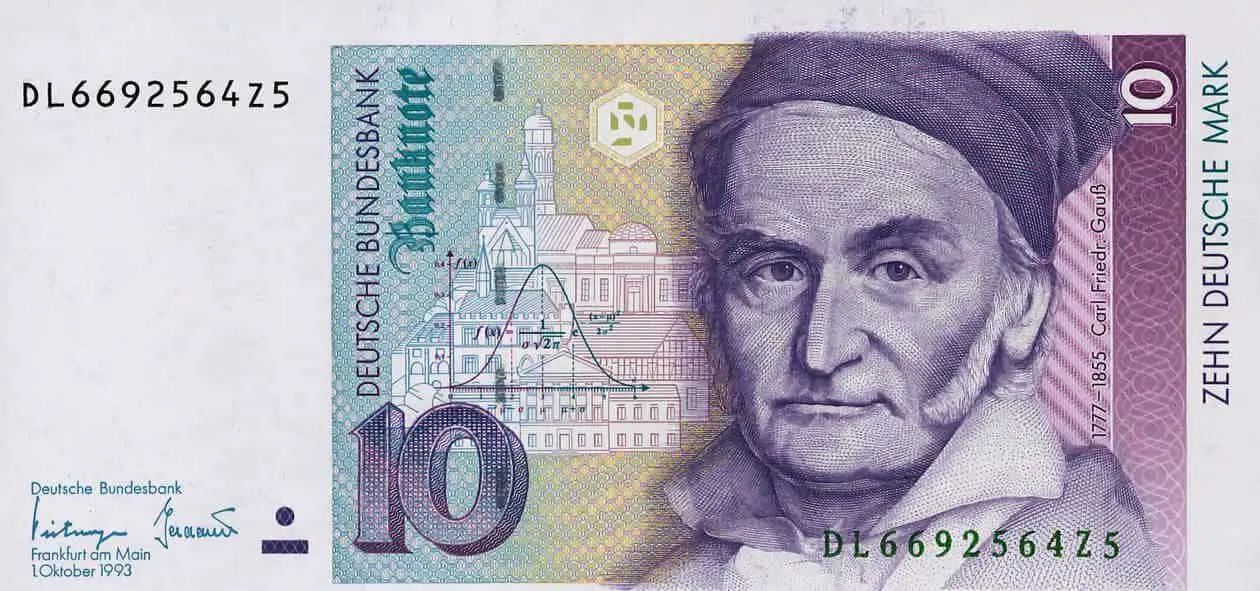
The history of the Deutschemark (DM) reflects Germany’s economic and political journey, particularly post-World War II. Here’s a detailed account of its history:
Post-World War II and Introduction of the Deutschemark (1948)
After World War II, Germany was divided into four zones controlled by the Allied powers: the United States, the United Kingdom, France, and the Soviet Union. Economic conditions were dire, and the existing currency, the Reichsmark, had lost its value due to hyperinflation and war-related economic destruction.
Introduction of the Deutschemark:
- Date: The Deutschemark was introduced on June 20, 1948.
- Context: The introduction was part of the currency reform in the three western zones (U.S., British, and French), aimed at stabilizing the economy and curbing inflation. This move effectively created two separate economic systems in Germany, establishing West Germany (Federal Republic of Germany) and East Germany (German Democratic Republic).
Economic Miracle and Stability (1948-1990)
The Economic Miracle (Wirtschaftswunder):
- The 1950s and 1960s saw rapid economic growth in West Germany, often called the “Economic Miracle.”
- The Deutschemark played a crucial role in this recovery, providing a stable currency that bolstered domestic confidence and international trade.
Monetary Policies:
- The Deutschemark was managed by the Bundesbank, which was established in 1957 as the central bank of West Germany.
- The Bundesbank was renowned for its stringent monetary policies, focusing on price stability and controlling inflation. This approach contributed to Deutschemark’s reputation as one of the world’s most stable and reliable currencies.
Reunification and the Deutschemark in Unified Germany (1990-2002)
Reunification of Germany:
- In 1990, Germany was reunified following the fall of the Berlin Wall and the collapse of the East German government.
- The Deutschemark became the official currency of the unified Germany, replacing the East German mark (Ostmark).
Stability and Strength:
- Throughout the 1990s, the Deutschemark continued to symbolize economic stability and strength. It became one of the most important currencies in the global market, frequently used as a reserve currency by other countries.
Transition to the Euro (1999-2002)
Introduction of the Euro:
- The European Union (EU) created a single currency to facilitate economic integration and stability across member states.
- The Euro (€) was introduced in non-physical form on January 1, 1999 (e.g., electronic transfers, travelers’ checks) and became the official currency for financial transactions and accounting.
Final Transition:
- The physical introduction of Euro banknotes and coins occurred on January 1, 2002.
- The Deutschemark was exchanged for euros at a fixed conversion rate of 1.95583 DM to 1 euro.
- By March 1, 2002, the Deutschemark ceased to be legal tender, completing the transition to the euro.
Legacy of the Deutschemark
Economic Stability:
- The Deutschemark’s legacy is marked by its role in stabilizing the German economy post-World War II and contributing to its remarkable economic recovery and growth.
- The Bundesbank’s successful management of the Deutschemark set high standards for the European Central Bank (ECB) in maintaining the euro’s stability.
Cultural Significance:
- The Deutschemark remains a symbol of economic stability and prosperity in German history. Its legacy continues to influence Germany’s economic policies and approach to the European Union’s financial systems.
The history of the Deutschemark encapsulates a period of significant economic transformation and resilience, illustrating how effective monetary policy can drive economic stability and growth.
French Franc
The French franc dated back to 1360 and was an essential part of the Latin Monetary Union (LMU) from 1866 to 1927. After the LMU, the franc continued as France’s currency until 2002. It was exchanged for euros at a rate of 6.55957 to one.
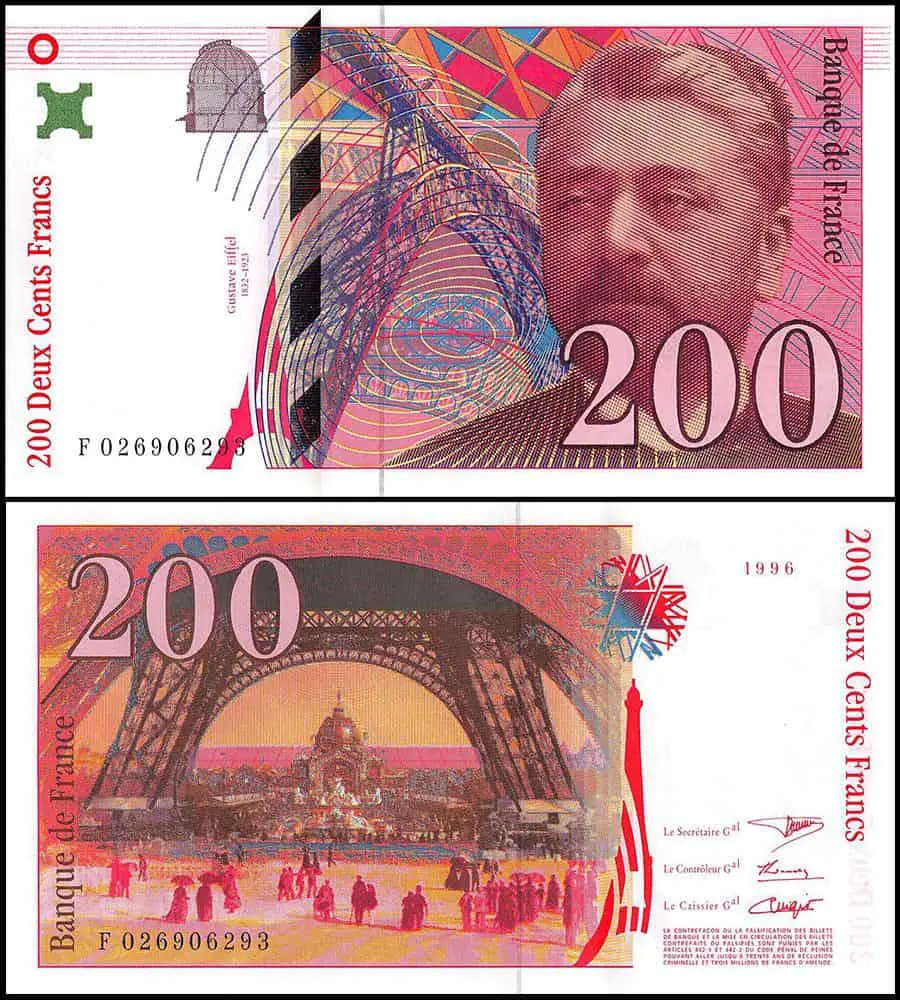
The French franc has a long and complex history that reflects France’s various economic and political changes over the centuries. Here’s a detailed account of its history:
Early History and Origin (1360-1795)
Introduction of the Franc:
- Date: The franc was first introduced in 1360 by King John II of France.
- Context: It was created to pay the ransom for King John II, who had been captured during the Hundred Years’ War. The franc was initially a gold coin weighing 3.73 grams.
Evolution and Usage:
- The franc was used sporadically over the centuries, often reappearing in different forms.
- By the late 18th Century, France experienced significant economic turmoil and inflation, particularly during the French Revolution.
The Modern Franc and the Latin Monetary Union (1795-1927)
Decimal System and Modern Franc:
- Date: In 1795, during the French Revolution, the franc was reintroduced as the official currency of the French Republic, now known as the “franc germinal.”
- Reform: This reintroduction was part of a broader monetary reform that established the franc on a decimal basis (1 franc = 100 centimes), providing simplicity and consistency.
Latin Monetary Union (LMU):
- Formation: The Latin Monetary Union was established in 1865, comprising France, Belgium, Italy, and Switzerland. Greece and other countries later joined.
- Purpose: The LMU aimed to standardize the currencies of member countries based on fixed weights of gold and silver, facilitating trade and economic stability across Europe.
- Operation: The franc and other member currencies adhered to these standards. However, the union faced challenges, including differing national monetary policies and economic conditions.
- Dissolution: The LMU effectively dissolved in 1927 due to the economic instability caused by World War I and subsequent monetary disruptions.
The Franc in the 20th Century (1927-2002)
Post-LMU Era and World Wars:
- After the dissolution of the LMU, the franc continued as France’s official currency.
- The franc faced significant devaluation and inflation during and after World War I, leading to economic instability.
Bretton Woods System:
- Post-World War II: In 1944, the Bretton Woods Agreement established a new international monetary system, pegging significant currencies, including the franc, to the US dollar.
- Devaluations: Despite efforts to stabilize the franc, it underwent several devaluations in the post-war period due to economic pressures and inflation.
New Franc (1960):
- Reform: In 1960, President Charles de Gaulle’s government introduced the “new franc” (nouveau franc) to address inflation and stabilize the economy.
- Conversion: The new franc was valued at 100 old francs (1 new franc = 100 old francs), simplifying the currency and restoring confidence.
Transition to the Euro (1999-2002)
Introduction of the Euro:
- Date: The euro was introduced in non-physical form on January 1, 1999, for financial transactions and accounting purposes.
- Transition: The euro became the official currency for electronic transactions, gradually replacing the franc in financial markets.
Physical Introduction of the Euro:
- Date: Euro banknotes and coins were introduced on January 1, 2002.
- Conversion Rate: The French franc was exchanged for euros at a fixed rate of 6.55957 francs to 1 euro.
- End of Legal Tender: The franc ceased to be legal tender by February 17, 2002, completing the transition to the euro.
Legacy of the French Franc
Economic Influence:
- The French franc played a crucial role in France’s economic history, reflecting the nation’s growth, challenges, and transitions.
- It facilitated trade and commerce within France and internationally, particularly during its time in the Latin Monetary Union.
Cultural Significance:
- The franc is remembered as a symbol of France’s economic identity and history.
- Its legacy continues influencing French monetary policies and the country’s role within the European Union and the eurozone.
The history of the French franc encapsulates the evolution of French monetary policy and the broader economic landscape of Europe, illustrating the interplay between national currencies and international monetary systems.
Italian Lira
The Italian lira was introduced in 1861 during Italy’s unification. Inflation occurred in the late 20th Century, and the lira was replaced by the euro at a rate of 1936.27 to one.
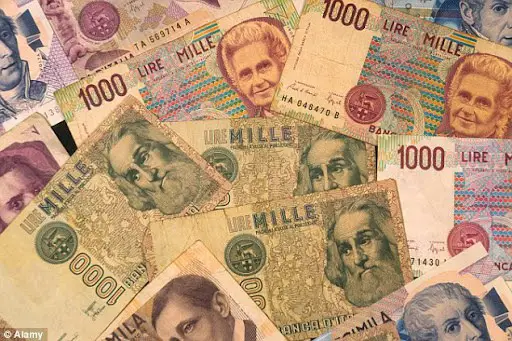
Spanish Peseta
The peseta was Spain’s currency from 1868 until 2002. Inflation heavily impacted it in the late 20th Century. The peseta was exchanged for euros at a rate of 166.386 to one.
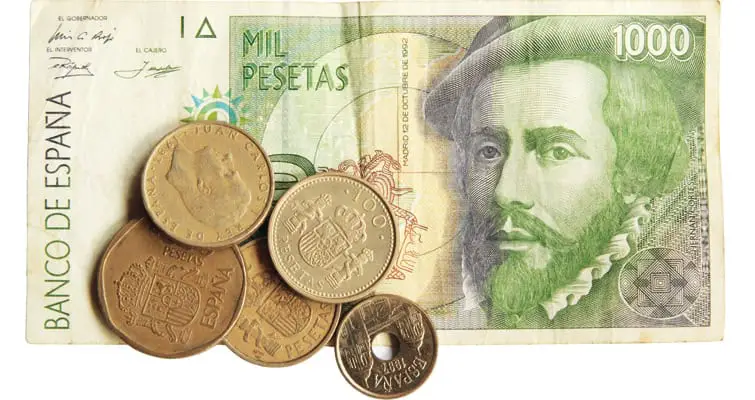
The Spanish peseta has a long and storied history, reflecting Spain’s economic and political changes from its introduction in the 19th Century until its replacement by the euro in 2002. Here’s a detailed account of its history:
Early History and Origin (1868-1936)
Introduction of the Peseta:
- Date: The Spanish peseta was introduced in 1868.
- Context: The peseta was established as part of Spain’s participation in the Latin Monetary Union (LMU), which aimed to standardize currencies across member countries based on fixed weights of gold and silver. The peseta replaced the Spanish escudo.
Decimal System:
- The peseta was based on the decimal system, with 1 peseta divided into 100 céntimos.
- This system provided simplicity and consistency, facilitating trade and economic transactions.
Latin Monetary Union (LMU):
- Membership: Spain joined the LMU in 1868, aligning the peseta with the union’s monetary standards.
- Operation: The peseta adhered to the LMU’s standards, which included specific weights and measures for gold and silver coins.
- Challenges: The LMU faced difficulties due to differing national monetary policies and economic conditions among member countries, leading to its effective dissolution in 1927.
The Peseta During the Spanish Civil War and Franco’s Regime (1936-1975)
Spanish Civil War (1936-1939):
- Economic Turmoil: The Spanish Civil War caused significant economic disruption and instability. Different factions issued their currencies, leading to confusion and devaluation.
- Reestablishment: After the war, the peseta was re-established as the national currency under Francisco Franco’s regime.
Franco’s Regime:
- Autarky and Isolation: During the early years of Franco’s rule (1939-1950s), Spain pursued a policy of autarky (economic self-sufficiency), leading to economic isolation and stagnation.
- Stabilization Plan: In 1959, Spain implemented a stabilization plan to open the economy, attract foreign investment, and modernize the financial system. This plan helped stabilize the peseta and spur economic growth.
Economic Growth and European Integration (1975-1999)
Post-Franco Era:
- Democratic Transition: After Franco died in 1975, Spain became a democratic government. This period saw significant economic reforms and modernization.
- Economic Growth: The late 1970s and 1980s were marked by rapid economic growth, industrialization, and increased foreign investment.
European Economic Community (EEC):
- Membership: Spain joined the European Economic Community (EEC), now the European Union (EU), in 1986.
- Impact: Membership in the EEC brought economic benefits, increased trade, and financial support, further stabilizing the peseta and integrating Spain into the broader European economy.
European Monetary System (EMS):
- Participation: Spain joined the European Monetary System (EMS) in 1989, which aimed to reduce exchange rate variability and achieve monetary stability in Europe.
- Exchange Rate Mechanism (ERM): The peseta participated in the ERM, pegging it to a basket of European currencies to maintain stability.
Transition to the Euro (1999-2002)
Introduction of the Euro:
- Date: The euro was introduced in non-physical form on January 1, 1999, for financial transactions and accounting purposes.
- Transition: The euro became the official currency for electronic transactions, gradually replacing the peseta in financial markets.
Physical Introduction of the Euro:
- Date: Euro banknotes and coins were introduced on January 1, 2002.
- Conversion Rate: The Spanish peseta was exchanged for euros at a fixed rate of 166.386 pesetas to 1 euro.
- End of Legal Tender: The peseta ceased to be legal tender by February 28, 2002, completing the transition to the euro.
Legacy of the Spanish Peseta
Economic Influence:
- The peseta played a crucial role in Spain’s economic history, reflecting the nation’s growth, challenges, and transitions.
- It facilitated trade and commerce within Spain and internationally, particularly during its time in the Latin Monetary Union and the European Monetary System.
Cultural Significance:
- The peseta is remembered as a symbol of Spain’s economic identity and history.
- Its legacy continues to influence Spanish monetary policies and the country’s role within the European Union and the eurozone.
The history of the Spanish peseta encapsulates the evolution of Spain’s monetary policy and the broader economic landscape of Europe, illustrating the interplay between national currencies and international monetary systems.
Dutch Guilder
The Dutch guilder was in use from 1517 until 2002. It was replaced by the euro at a rate of 2.20371 to one and ceased being legal tender in January 2002.
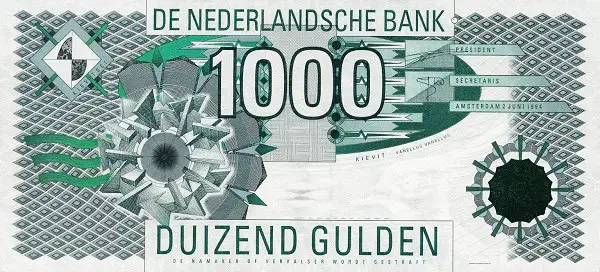
Belgian Franc
The Belgian franc was Belgium’s currency from 1832 until 2002. It was exchanged for euros at a rate of 40.3399 to one. Belgian franc banknotes are still exchangeable indefinitely.
Austrian Schilling
The Austrian schilling was used between 1925 and 1938 and 1945 and 2002. It was replaced by the euro at a rate of 13.7603 to one.
Irish Pound
Introduced in 1928, the Irish pound was pegged to the British pound until 1979. It was replaced by the euro at a rate of 0.787564 to one.
Finnish Markka
The Finnish markka was Finland’s currency from 1860 until 2002. It was replaced by the euro at a rate of 5.94573 to one.
Portuguese Escudo
The Portuguese escudo was used from 1911 until 2002. It replaced the real and was itself replaced by the euro at a rate of 200.482 to one.
Summary of Pre-Euro Currencies
- Many European countries had unique currencies before adopting the euro.
- The euro was adopted in 1999 by many EU member states for electronic transactions, with physical banknotes and coins introduced in 2002.
- Dual circulation periods they allowed a smooth transition from old currencies to the euro.
- While most EU member states are expected to eventually adopt the euro, some, like Denmark, maintain their currencies.
Understanding the history of these currencies provides insight into the economic and cultural shifts that have shaped modern Europe. The transition to the euro marked a significant milestone in European integration, fostering closer economic ties and simplifying cross-border transactions within the eurozone.
























